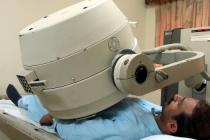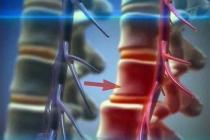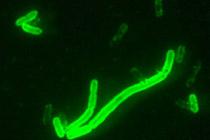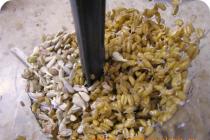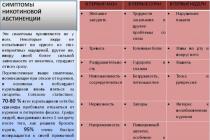Hypersensitivity to any product or its intolerance is a food allergy. The word "allergy" in translation from Greek means "another action", that is, a certain product or substance has a different, unexpected, not intended effect on a person. In our time, due to the unfavorable environmental situation, food allergies are widespread. About a third of children under five suffer from this disease, and at an older age, one in five children are allergic to one degree or another. With age, food allergies "subside" a little, but among adults, a certain number of people constantly experience difficulties associated with allergies to various foods, and intolerance to one or two types of foods occurs in almost every second person. It is noticed that different children perceive the same food in different ways. For example, some drink cow's milk well, while others immediately start having a runny nose, watery eyes, and stomach upset. Such children are said to be milk-intolerant.
Intolerance to dairy products is quite common, manifested by diarrhea, abdominal pain. It should be noted that almost any product can be rejected by the body.
Allergic reactions are most susceptible to those children whose parents or distant relatives suffered from allergic diseases. The likelihood of allergies in babies on artificial feeding and in children with digestive disorders is increased.
Preventive measures include a hypoallergenic diet of a nursing mother that excludes chocolate, eggs, exotic fruits, mandatory breastfeeding, late introduction of fruit juices into complementary foods, and prevention of dysbiosis in a baby.
In a newborn, skin allergic reactions are more common, less often respiratory or gastrointestinal.
Cow's milk ranks first among food allergens.
Usually, an allergic reaction after eating an allergen occurs in the first hour, but it happens that the reaction can appear even after 5 hours and after 12.
Exacerbation of allergies against a background of the same type of diet may depend on the state of health of the child as a whole - after an infectious disease, during a period of prolonged stress, in the off-season, the body's defenses may decrease, which provokes an exacerbation of the allergic process.
Causes of food allergies
It has not yet been precisely established why the body of children reacts differently to the same food product. There may be a hereditary predisposition to allergies. It has also been observed that formula-fed babies are more prone to allergies than breastfed babies. If a mother during pregnancy abuses such foods as chocolate, "citrus fruits, tropical fruits, strawberries, grapes, various smoked meats, takes any medications during this period, then the child may begin to develop hypersensitivity to them in utero." After birth, the first contact with these products may cause an allergic reaction.
What is the mechanism of this disease? In response to the introduction of an allergen into the body, which can be food, dust, microbes, drugs, etc., the immune system produces its own proteins, the so-called antibodies. With repeated exposure to the allergen, an allergic reaction develops - the interaction of antibodies with the allergen that caused them. This immediately affects the functions of certain organs, most often the respiratory tract, intestines, and skin. Reactions in the body lead to the formation of chemicals that cause allergies, such as histamine. The most famous antiallergenic drugs are called antihistamines because they affect its formation. With allergies, blood vessels are affected, a rash often appears (the most common urticaria), a runny nose, and swelling of the eyelids. Eyes begin to water. In the most severe cases, airway cramps (choking) may occur. Food allergy affects the activity of the digestive tract (loose frequent stools, vomiting, abdominal pain, heartburn), sometimes affects the mucous membrane of the upper respiratory tract (the child often suffers from pharyngitis, conjunctivitis, he has a constant runny nose). In some cases, such an allergy leads the child to bronchial asthma. A child with allergies often suffers from colds. The kid finds himself in a "vicious circle" - in winter and autumn he is susceptible to colds, and in spring and summer, allergic reactions to the flowering of various plants and herbs (polynosis) are aggravated. Often, you can also observe various skin lesions in an allergic baby, especially on the bends of the elbows, under the knees, on the hands. These manifestations can turn into eczema or neurodermatitis. The child is constantly irritated, restless. This also affects his nervous system. Food allergy can be combined with neuro-arthric diathesis, when the manifestations of allergies are aggravated by nervous excitement and various anxieties of the child.
Learning to recognize the signs of food allergies is very important as they are very different. The skin, respiratory tract and intestines are primarily affected by allergies. Irritability, tearfulness, anxiety, fear, hyperexcitability and sleep disturbance are signs of the involvement of the nervous system in the disease-causing process caused by food allergies.
The time of occurrence of a reaction to a particular product is usually different in length. Some symptoms occur immediately after consuming food containing allergens, or after just a few minutes (fast-type allergic reaction), while others - after a certain, sometimes long time (several days) - are delayed-type allergic reactions. The severity of the reaction may also depend on the amount of food eaten. For example, if a child has eaten only a couple of strawberries, he may experience slight itching of the skin of his face and hands, and with a large number of berries eaten, even swelling of the respiratory tract is possible.
If your little one is prone to inadequate response to food, try writing down what and when he eats, as well as note any discomfort that then appears. Such a "food diary" is especially necessary for sick children, since there is often a direct relationship between the intake of a particular product and the body's response to it (loose stools, cough, anxiety or abdominal pain). Keeping these records will help you and your pediatrician identify foods that are unsafe for your baby and how they are exposed. Write down the time and amount of food eaten (highlight the introduction of new foods). Also note the manufacturer of the products (after all, different factories or dairies use a slightly different technology for making products. Therefore, perhaps the child will suit sweet curds (without chocolate!) From one manufacturer and he will not accept the same cheese of another brand. Better give new products to the baby early in the morning, so that in case of an allergic reaction, you can fix it (after all, at night, when the child is asleep, it is more difficult to see the rash or other manifestations).
The most common cause of allergic reactions is certain foods. These are, for example, dairy products (milk protein is the main allergen), various sweets containing chocolate (cocoa is a strong allergen), nuts, colored (red) vegetables and berries: strawberries, strawberries, also citrus fruits (especially oranges), soy egg white , products from wheat flour. Fish and fish products (this is caviar, various seafood - shrimp, crabs, etc.) are also very allergenic. Some children are allergic to all "red" vegetables and fruits: tomatoes, carrots, red apples, raspberries, peaches.
Allergies can be caused not by specific foods, but by a sharp predominance of proteins, fats, or carbohydrates in the child's diet. Such a one-sided diet is not uncommon for a child with a poor appetite who prefers to “sit on a mono-diet”.
Food allergy is a state of increased sensitivity of the body to food, which is based on immunological mechanisms. It can cause acute conditions (anaphylactic shock, broncho-obstructive syndrome, allergic vasculitis, urticaria, etc.) and can support chronic and recurrent lesions of the ENT organs (ear, throat and nose), skin, gastrointestinal tract, nervous system ...
Food allergy is part of the broader concept of food intolerance.
Food intolerance, in addition to food allergies, includes fermentopathies, psychogenic reactions to food, pseudo-allergic reactions to food.
Pseudo-allergic reactions to food are not immune responses, although they look very similar to them. Pseudoallergy develops when eating food containing histamine or when histamine is released during digestion in the gastrointestinal tract. For example, canned tuna and mackerel can contain high concentrations of histamine. Certain food additives (dyes, preservatives, flavors) can also cause a pseudo-allergic reaction.
Pseudo-allergic reactions often occur in children when they are abruptly weaned and switched to other foods or when the child is given an unreasonably large amount of complementary foods.
At the same time, medical statistics on the spread of food allergies are very varied: according to some data, 20-40% of children of the first year suffer from it, according to others, the prevalence of proven allergies in children of the first year is 6-8%, among adolescents - 2-4%.
There is an age-related evolution of food allergy: in 20% of patients, its timely and adequate treatment leads to clinical recovery; 41% have a change in the manifestation of food allergy to target organs; in 38%, a combined manifestation of food allergy with the involvement of several "shock" organs - skin, gastrointestinal tract, respiratory system - is formed.
Against the background of food allergy, Uz children develop an increased sensitivity of the body to other types of allergens.
Food sensitization is often initial and can develop even in utero or from the first days and months of a child's life.
The occurrence of food allergies in children of the first year of life is associated, on the one hand, with the peculiarities of the development of the digestive tract, and on the other, with nutritional disorders of the mother and child.
The peculiarities of the state of the digestive tract include: increased permeability of the mucous membrane of the gastrointestinal tract for macromolecules (including food allergens); decreased local intestinal immunity; a decrease in the enzymatic activity of enzymes of the gastrointestinal tract, an altered composition of the intestinal microflora.
Symptoms and Signs
Allergic skin reactions (usually worse in autumn) can appear as increased dry skin with flaky or reddened areas, usually on the elbows, neck, and knees. Peeling or redness of the skin is sometimes accompanied by itching, which is very distressing to children.
If parents can easily notice the manifestations of allergies on the skin, then various disorders of the functions of the digestive system are usually difficult to directly associate with the effect of a food allergen. Food manifestations can be in the form of flatulence, anxiety after eating, regurgitation, abdominal pain, refusal of a certain food, unstable stool.
If you are allergic to cow's milk protein (among newborns suffering from atopic dermatitis, 90% of children are allergic to cow's milk protein), prolonged diarrhea may occur, during or after feeding, the child may draw his legs to his stomach, signaling the pain that bothers him. In case of an established allergy, a nursing mother should refuse to eat cow's milk and switch to goat or soy milk.
Least often, food allergy causes respiratory disorders, which can be expressed as a prolonged runny nose, apnea, attacks of difficulty breathing.
Treating food allergies
Possible treatment regimen
Self-treatment of such a serious disease as allergies should not be carried out on your own. Consult an allergist, conduct an allergy test. If you have not yet noticed allergic manifestations in a child, but the test is positive, it is better to treat the child after a second analysis, without waiting for the allergy to manifest itself.
You should carefully monitor the state of the intestinal microflora of the baby and carry out the prevention of dysbiosis using medicinal products containing probiotics and pre-biotics, as recommended by your pediatrician.
To colonize the intestines with useful microflora, three types of substances are used today:
- probiotics - live bacteria of normal intestinal microflora;
- prebiotics - oligosaccharides that increase the amount of protective intestinal flora and its functional activity;
- synbiotics is a mixture of pro- and prebiotics, in which the presence of prebiotics helps to quickly “engraft” beneficial bacteria and restore protective microflora.
To facilitate perception, the table shows food products containing the main components that contribute to the colonization of the intestine with normal microflora.
Discuss with the pediatrician and allergist the baby's diet - what products or mixtures you can fully replace the allergens excluded from the diet.
In case of an exacerbation, the doctor usually prescribes antihistamines, and skin itching or redness can be removed with the help of such ointments as "Atoderm", "Fleur-Enzym", "Belanten".
The most important factor in the treatment of food allergies is diet therapy. A properly selected hypoallergenic diet in the early stages of the disease contributes to clinical recovery; in case of severe manifestations of food allergy, it, as part of complex therapy, contributes to the improvement of the condition and the development of long-term remission. The diet should be strictly individual, with the exclusion of products from the child's diet that cause allergic reactions in this patient - this is the so-called elimination diet.
For babies in the first year of life, natural feeding is optimal. Breast milk contains proteins, fats, carbohydrates, trace elements, vitamins A, C, E, B 12 necessary for the growth and development of the child.
If the baby is breastfed and shows signs of allergy, it is necessary to prescribe a hypoallergenic diet for the mother, but in no case should breast milk be excluded, since the allergy is not caused by proteins in breast milk, but by allergens that have penetrated into milk from the mother's food.
Mother's hypoallergenic diet- food should not be one-sided and plentiful. The diet should have a sufficient amount of proteins, fats, vitamins, minerals, trace elements. The diet should not include many obligate allergens and cow's milk (no more than 0.5 liters), the diet should not contain spices, canned food, smoked meats, as these substances increase the penetration of allergens through the intestinal barrier.
When artificially feeding children with food allergies caused by cow's milk proteins, it is necessary to use mixtures prepared on the basis of soy milk: Alsoy, Nutri-soya, Similak-isomil, Enfamil-soya, etc.
If there is an allergy to soy protein, then it is advisable to use a mixture based on hydrolysates of whey proteins, that is, a mixture of free amino acids: "Frisopen-1" for children under six months and "Frisopen-2" for children under one year old. You can also use the mixtures "Precetimil", "Alfare", "Pepti-junior" - these are medicinal mixtures, when they are used, stool normalization is observed and skin manifestations of exudative diathesis are reduced.
Complementary foods for children with food allergies are introduced a month later than for healthy children - from 5.5-6 months. Fruit juices are introduced to such children from 3-3.5 months, it is better to start the introduction of juices with natural apple juice without sugar.
As the first complementary food, it is better to give vegetable puree, start with a one-component puree - from potatoes that are previously soaked, from zucchini, white cabbage and cauliflower. Carrots, pumpkin are added at a later date and only if there is no allergy to these vegetables.
If the child often has liquefied or unstable stools, if the child does not gain weight well, you can give him porridge - rice or buckwheat as the first complementary food, the same porridge can be used for the second complementary feeding, which is prescribed a month after the first. It is better not to give semolina and corn porridge.
From 7-8 months of age, you can enter natural meat, in a chopped form. If the child does not have a negative reaction, you can give beef; if the allergic reaction to beef increases, it should be abandoned and replaced with rabbit or turkey meat.
In the absence of a pronounced allergy to cow's milk proteins from 6-7 months of age, fermented milk products "Narine", "Matsoni", "Bifidokefir", "Bifidok", etc. can be used. With fermented milk fermentation, the allergenic activity of cow's milk proteins decreases, in addition , these products are useful for intestinal dysbiosis.
Whole cow's milk can be given to children after one year, whole chicken eggs after two years.
When introducing complementary foods, the following rules must be observed: introduce a new food product only when there are no pronounced clinical manifestations of food allergy; start the introduction of a new product in a small volume with 1A-1 / 2-1 teaspoon, gradually increasing the volume; give each new product for 5-7-10 days in a row, depending on the baby's reaction - only with a positive reaction of the body can you start introducing a new product; give complementary foods with a spoon in the morning and afternoon hours, so that you can track the reaction to it.
Food allergies are most common in children under two years of age.
Certain foods are excluded from the diet for different periods of time, which can range from 1.5-2 months to 2 years or more, depending on the degree of allergenicity of the product and the severity of clinical manifestations of food allergy. For example, an allergy to fish, fish products, nuts can persist for a lifetime.
Foods containing allergens specific to the child are excluded from the diet of children over one year old with food allergies. The diet is gradually being expanded with a gradual increase in the amount of previously intolerable product. To reduce the allergic effect, it is recommended to subject the product to culinary processing (soaking, heat exposure, fermented milk, etc.).
Prevention of food allergies
The modern food industry produces too many unnatural foods that contain highly allergenic preservatives and colorants (read more about this in the following chapters). Avoid products containing food additives with an E index - this is not for allergy children and, in general, preschool children are better off completely abstaining from them.
The safest foods are also known that can be given to children without fear of an allergic reaction. These are apples, apricots, gooseberries, white or yellow plums, white or red currants, white cherries, green grapes, pears, rye bread, oats, zucchini, beets, sunflower oil, rice.
However, if this is your first time giving a product to your little one, be careful!
Read carefully the composition of the product, read the inscriptions on the labels. After all, even such "harmless" products as noodles and pasta contain wheat and very often eggs, and milk is a part of creamy cookies. Dairy products are used in the preparation of many types of bread.
If you have established what foods are causing your child's food allergies, eliminate them entirely. Without chocolate or oranges, the baby will not feel worse, especially since chocolate is also harmful due to its high sugar content. However, eliminating dairy products from your diet is not easy. In this case, you need to visit an allergist. In addition, food allergy can be accompanied by a reaction to other allergens (drugs, plant pollen, house dust, natural wool or fur, paint smell, etc.).
It should be noted that the peculiarity of the nutrition of a child with skin manifestations of food allergy (exudative diathesis, weeping eczema) is a large proportion of products containing protein. This amount of protein is necessary due to the significant breakdown of its own proteins in the body of a sick baby. Sources of valuable protein for him will be cottage cheese and dairy products (kefir, natural yogurt) - in the absence of an allergy to cow's milk. It should be emphasized that the amount of dairy products for an allergic child is limited to 400 ml per day (two glasses of kefir, or yogurt, or, in the absence of allergies, milk). Lean beef, pork, rabbit, or turkey can also be eaten for protein saturation. You can try quail eggs. Although legumes are a source of protein, they should be given with caution to children with allergies.
To maintain immunity, the child also needs protein.
To restore damaged skin with eczema, a child needs vegetable fats (sunflower, corn, olive oil). Vegetable oil should make up about a quarter of all fat eaten, and butter is also good. It is better not to give fat and other animal fats to an allergic child.
If a child has a significant improvement in his condition for some time - there are no manifestations of allergies on the skin, runny nose, cough and digestive organs in order, do not rush to immediately start giving "forbidden" foods. Wait at least two to three months and then start with tiny doses. We are not, of course, talking about chocolate, citrus fruits, smoked meats and exotic fruits. In case of the slightest manifestation of allergies, you should again return to a strict diet.
If your baby is forced to stick to a diet for a long time, this should not affect his development. After all, the diet includes basic food products (vegetables, some fruits, lean dietary meat, cereals, dairy products, a small amount of eggs. But at this age, many children who have no food restrictions prefer to eat a small set of foods. And this is enough for them to develop normally.
Sometimes you can face the fact that parents do not understand the need for strict adherence to the diet. They consider this to be a “doctor’s invention” and allow the child to eat what he wants. As a result, the disease is often complicated and prolonged. But simple adherence to a diet in this case is almost a "panacea" for complications and the transition of allergies to a severe chronic form (eczema, bronchial asthma, etc.).
Food allergy refers to an overreaction of the body caused by certain foods or food components. When food enters the body, an erroneous reaction of the immune system occurs: it takes food for a hostile element and begins to actively produce specific immunoglobulins that perform a protective function. This process triggers allergic reactions. Usually, a pathological immune reaction is provoked by proteins, sometimes carbohydrates and fats. True food allergies are quite rare, they are often confused with individual intolerance to specific foods, since both problems are accompanied by the same symptoms.
The reasons
Hypersensitivity to certain food components and products is most common in children. The mechanism of occurrence of food allergy looks like this: food enters the body, which, for some reason, the immune system perceives as a potential threat, after which the active production of immunoglobulins begins to fight the "enemy", as a result of which pathological reactions occur.
The reasons why the body classifies certain components as hostile are not fully understood. However, there are factors that contribute to the occurrence of food allergies in children:
- hereditary predisposition to allergic diseases;
- gastrointestinal diseases and intestinal microflora disorders;
- weak immunity (due to age or due to illness).
Indirect reasons are the mother's unhealthy diet during pregnancy. Influences the development of food allergies in the future and early weaning, and violation of the rules for introducing the first complementary foods.
Symptoms
Food allergies in children can manifest in different ways. The intensity of symptoms depends on many factors, including how much the allergen has entered the body. Allergy symptoms can be immediate and acute. These symptoms are considered the most dangerous. When taking an allergen, there is a swelling of the throat and palate, the tongue becomes numb. In this case, immediate hospitalization is required. Such manifestations of allergies are not so common. Typical symptoms of pathological immune reactions to food in children include:
- skin lesions - a rash of a different nature, red spots, peeling of the skin, swelling of the lesions, itching and burning;
- respiratory signs - rhinitis, tearing, cough;
- problems in the digestive tract - diarrhea and constipation, vomiting, abdominal pain, lack of appetite.
Symptoms are usually complex. Most often, a child can observe a combination of skin lesions and disturbances in the digestive system. The brightness of the clinical picture depends on whether contact with the allergen has ceased. If the irritant continues to enter the body, then the intensity of the symptoms increases.
Diagnosing food allergies
Diagnosis of food, like any other allergy, is carried out by an allergist. He makes a diagnosis based on:
- clinical picture;
- anamnesis;
- analysis results.
Symptoms of food allergy are similar to those of various diseases, so it is important to seek differential diagnosis. One of the first tasks of an allergist is to identify the allergen. With food allergies, this is easy to do only when an instant reaction is manifested, in all other cases difficulties arise. The search for an allergen in young children is carried out by the exclusion method: first, the doctor prescribes a strict diet, and then gradually the products familiar to the child are introduced into the diet. Children over five years of age, with difficulties in identifying an allergen, undergo allergy tests.
Complications
Food allergies are dangerous because of their acute manifestations. In case of an immediate acute reaction, the child may require urgent medical attention: delay can lead to serious consequences, up to and including death. Dangerous manifestations of this type of allergy include:
- swelling of the larynx;
- anaphylaxis;
- bronchospasm.
If food allergy is not treated and, during exacerbations, forces are not directed to relieve symptoms, then it can develop into atopic dermatitis and bronchial asthma. Allergic manifestations reduce the child's immunity, open access to the body for infections and viruses.
Treatment
What can you do
The treatment of food allergies in children must be approached comprehensively. Only a doctor can outline a course of treatment after identifying an allergen. The most important thing that parents can do for their child is to make an appointment with an allergist at the first signs of pathological reactions. In the future, it will be necessary:
- exclude contact of the child with a food irritant;
- give medicines prescribed by a doctor;
- take general measures aimed at increasing the child's immunity (proper nutrition, natural vitaminization, adjusting the regimen, playing sports).
Before consulting a doctor, you should not give your child medications, and also experiment with traditional medicine methods. Parents also do not have to make their own decision on stopping the course of treatment: it must be completed to the end, even if the symptoms were removed.
What the doctor does
For food allergies in a child, the doctor prescribes a comprehensive treatment. It aims to:
- relief of symptoms;
- elimination of the allergen from the body;
- restoration of intestinal microflora.
For food allergies, diet therapy is indicated, sometimes it is enough to stop the reaction. Allergies of this type in children are treated with medication. An allergic child is prescribed drugs based on the patient's age and symptoms. Usually use:
- enterosorbents;
- antihistamines;
- local agents (for skin manifestations);
- drugs that affect respiratory symptoms.
Prevention
Preventing food allergies in children comes down to a sensible approach to nutrition. To avoid excessive reactions, you must:
- correctly introduce the first complementary food;
- always introduce the child to new products gradually, while observing the reaction of the body (most importantly up to the age of five);
- carefully give the child foods that are considered allergenic (especially if there is a predisposition to pathological immune reactions or the child is still young);
- prohibit the child from consuming harmful products containing dyes, aromatic and nutritional additives (especially important for adolescents who love "harmful").
If a child is familiar with food allergies, then there is only one way to avoid the appearance of reactions - to exclude an allergen product from the diet. Allergies must be reported to the kindergarten or school, and the child must be taught to avoid danger.
Find out what can cause an ailment, how to recognize it in a timely manner. Find information about what are the signs that can be used to identify ailment. And what tests will help identify the disease and make the correct diagnosis.
In this article, you will read all about the methods of treating a disease such as food allergies in children. Clarify what effective first aid should be. How to treat: choose medicines or alternative methods?
You will also find out what the danger of untimely treatment of food allergy disease in children can be, and why it is so important to avoid the consequences. Everything about how to prevent food allergies in children and prevent complications.
And caring parents will find on the pages of the service complete information about the symptoms of food allergy in children. What is the difference between the signs of the disease in children at the age of 1, 2 and 3 years from the manifestations of the disease in children at the age of 4, 5, 6 and 7? What is the best treatment for food allergy in children?
Take care of the health of loved ones and be in good shape!
Many parents face a negative reaction of the baby's body to food. Intolerance to certain components can be observed in both infants and older children. The success of the treatment of pathology largely depends on the awareness of adults, adherence to a hypoallergenic diet and doctor's recommendations. The sooner an allergy is diagnosed and treatment is started, the lower the risk of dangerous complications.
How a child's food allergy occurs
Disease is the high sensitivity of the immune system to specific substances in food. Food intolerance develops in children due to the fact that immunoglobulin E (protein) enters into a chemical reaction with the "provocateur". Allergy manifests itself in the form of rashes that occur on the skin after eating certain foods. The disease is equally common in girls and boys.
Allergy symptoms can occur at any age, even in infants up to a year. The provoking factors in this case are allergens in food, which, after entering the body, pass through the digestive system and are easily absorbed by the intestines. In the blood, foreign agents are recognized by the cells of the immune system. Contact with an allergenic substance leads to the onset of many inflammatory reactions. At this time, a huge number of biologically active substances are released.
A special sign of an allergic reaction is an increase in the amount of immunoglobulin E (normally, its level is always the same). Other substances that also stimulate the inflammatory process are histamine and bradykinin - they affect the diameter and tone of blood vessels. A high concentration of these substances causes spasm of the peripheral arteries, which contributes to the violation of the contractility of the heart muscle and a sharp decrease in blood pressure.
Biologically active components formed during an allergic reaction adversely affect the organs of the gastrointestinal tract, which leads to disruptions in the digestive function of the body, they reduce intestinal motility. If allergens are not removed from the body on time, unpleasant symptoms can persist for a long time.
The reasons
In babies prone to allergic reactions, the disease manifests itself very early, up to one month of age. As a rule, allergies cause itching and skin rashes. The main reasons causing the manifestations of the disease are:
- Wrong woman menu. The diet of the expectant mother predetermines the health of the baby, therefore, women in a position should not eat citrus fruits or strawberries. In addition, it is recommended to limit the amount of fish and seafood in the diet. In recent months, it is worth removing cow's milk from the menu, replacing it with fermented milk products.
- Improper baby feeding. Early introduction of artificial mixtures can lead to allergies. This is due to the fact that many of these products are based on cow's milk protein, which is a strong allergen. Therefore, it is recommended to breastfeed the baby for at least the first year of his life. This will protect the baby from many ailments and will serve as a guarantee for strong immunity in the future. If it is impossible to breastfeed, you should give preference to hypoallergenic mixtures based on goat or soy milk. In older children, food containing preservatives, flavors, dyes, emulsifiers, etc., can act as a provocateur.
- Incorrect introduction of complementary foods. Symptoms of pathology are partly due to the use of "adult" food by the baby. This indicates the delay in introducing complementary foods or too large a portion. Some mothers offer the child several types of products at once, which also negatively affects his health. To prevent the development of food intolerance, it is important to follow the pediatrician's recommendations in this matter.
- Heredity. If the parents are allergic, the baby will also be prone to allergic reactions.
- Antibiotic use. When treating an infant with such drugs, the risk of illness increases greatly, since during the first year of life, the baby's immune system forms, and antibiotics can disrupt this natural process.
- Overfeeding. There must be moderation in the diet, since overfeeding can cause an allergic reaction. At the same time, even products that were previously normally perceived by the body of the crumbs can provoke it.
- Various pathologies. Often, the cause of food intolerance in children is some primary pathology, for example, a disease of the biliary tract, digestion or liver. The development of allergies can cause disturbed intestinal microflora. As a rule, such ailments are based on the baby's malnutrition, but sometimes they can be congenital.
To cure the pathology, initially from the menu, the crumbs exclude food that can cause unpleasant symptoms in the form of itching, redness of the skin, rash, etc. There are many products that stimulate allergies, but among the most common causes of the disease are the following:
- Citruses and other exotic fruits. Extractive ingredients and fruit acids have pronounced allergenic properties. Even a small amount of them can cause manifestations of the disease.
- Seafood. Mom, as a rule, introduce them into the children's diet after the baby reaches 3-4 years old. At this time, the first symptoms of food allergy are often recorded. Seafood can even cause Quincke's edema or anaphylactic shock.
- Chocolate and sweets with cocoa content. Nickel or various types of oils in such delicacies can cause ailment.
- Cow protein. Lactose intolerance is common among children. As a rule, its signs become noticeable even in the first year of the baby's life.
- Gluten-containing foods. This vegetable protein is found in flour and in many cereals. When gluten enters the children's intestines, the component causes symptoms of celiac disease and an allergic reaction.
- Yellow, red and other bright berries, fruits. They contain a lot of natural dyes that contribute to the development of allergies. These substances have a high allergenic effect, so they should be introduced into the baby's diet very carefully.
- Commercially prepared food. As a rule, such products contain many flavors and spices, therefore they have a sensitizing effect on the immune system and provoke the occurrence of food intolerances.
- Sweet drinks. Poor quality dyes lead to allergies, and with prolonged use, they have a toxic effect on the liver and pancreas.
- Incorrectly selected infant formula. Some of the adapted cereals for babies cause allergic reactions. The more ingredients in such mixtures, the harder it is to determine which allergen was. As a rule, unpleasant symptoms appear in children after eating cereals with dry cow's milk or gluten in the composition.
- Eggs (chicken, quail). If a child has an intolerance to chicken, rice, the development of an allergy to eggs is 80%.
- Nuts. Even a small amount of a crushed product in a porridge or bar can cause the development of allergic manifestations.
Signs of food allergies in children
The manifestation of the disease in babies in each case is individual, while the same product in different children can cause excellent reactions. Food intolerances are usually manifested by the following general groups of symptoms:
- Skin lesions. Signs of this are a rash, reddening of the skin, the appearance of profuse prickly heat, even with slight overheating, peeling (usually localized in the scalp), diathesis, Quincke's edema, and the occurrence of diaper rash.
- Problems in the digestive tract. Manifest in the form of constipation, frequent loose stools with foam or colored green, vomiting, colic, flatulence.
- Respiratory disorders. This category includes symptoms such as: allergic rhinitis (nasal congestion, runny nose with discolored discharge, swelling of the mucous membrane), otitis media, headaches, ear congestion, hearing impairment, allergic conjunctivitis, bronchospasm, difficulty breathing, etc.
A serious degree of food intolerance is treated exclusively in a hospital setting. Food allergy in children requires immediate medical attention, which is manifested by the following symptoms:
- swelling of the tongue;
- difficulty swallowing;
- a feeling of tightness in the throat.
The listed signs indicate the development of Quincke's edema, a life-threatening condition. If a child has general weakness, dizziness, blurred vision, this indicates a decrease in pressure. If it falls to a critical level, fatal consequences are possible. Anaphylactic shock is indicated by high blood pressure, loss of consciousness, convulsions, severe shortness of breath, a rash - this is also a reason for an immediate visit to the hospital.

Why allergies in children are dangerous
Parents should definitely know the symptoms of the ailment in order to quickly determine it in a child and contact a pediatrician. Any delay can lead to serious consequences. Self-treatment is unacceptable, any therapeutic methods can be used only after consulting a doctor. The doctor will examine the baby and prescribe the optimal type of treatment for food intolerance. Neglect of therapy leads to such consequences as:
- allergic vasculitis;
- decrease in pressure;
- anaphylactic shock;
- hemolytic anemia;
- bronchial asthma;
- obesity;
- eczema;
- serum sickness (immune response to the introduction of foreign proteins);
- aggravation of chronic diseases of the digestive, cardiovascular system, ENT organs.
Diagnostics
To identify food intolerances in children, an examination is necessary. Diagnosis of a disease is a set of measures, as a rule, doctors resort to the following methods:
- Analysis of risk factors. The specialist finds out which menu, the daily routine of the child, is interested in hereditary predisposition. This information is essential for a correct diagnosis.
- Parents keep a food diary. This procedure should take at least two weeks. Parents should write down absolutely all the foods that the baby ate and mark next to each of them how the child's body reacted to the food. This technique helps to identify the allergen.
- Immunological blood test. A reliable laboratory study, involving the determination of the presence of a specific immunoglobulin in blood taken from a vein. If, as a result of the analysis, an excess amount of a substance was found, the crumbs have a high risk of having a food allergy.
- Blood test for provocateurs. Determines the presence of common allergens in biological material. Sometimes such a study does not detect all the provocateurs present in the blood, therefore, even having established the type of allergen, it is necessary to very carefully introduce new products into the children's menu.
- Skin tests. The study is carried out for children over 5 years old. Shallow scratches (notches) are made on the forearm, on which a solution of allergens is applied. After 10 minutes, the results can be evaluated. Redness and inflammation signal that the product is triggering food allergies.
Treating food allergies in children
Methods of combating the disease are based on dietary nutrition (the product provocateur is excluded from the diet), immunotherapy and drug treatment. The latter, although it does not eliminate the cause of food intolerance, quickly relieves unpleasant symptoms. With the development of symptoms of an allergic reaction, parents need to immediately help the baby:
- rinse the mouth with warm water;
- exclude further contact with the causative agent of the allergy;
- apply a cool compress to itchy areas of the body;
- give the crumb an antihistamine - Tavegil, Loratadin, Claritin.
If a child has a breathing disorder, cramps in the throat, shortness of breath, hoarseness, painful syndrome in the abdomen, nausea or vomiting, itching of large areas of the body, dizziness, accelerated heart rate, loss of consciousness or a strong heartbeat - this is a good reason to immediately seek medical help ...

Diet and daily routine
The most important component of the treatment of pathology is a properly composed diet. Children with allergies are prescribed a special diet, based on the exclusion from the menu of food that can cause unwanted reactions. As a rule, the diet is selected individually for each patient, taking into account the research conducted. Nevertheless, in some cases, doctors consider it advisable to apply a general hypoallergenic diet that excludes all provocative foods.
Junk food was listed above, in addition, you should list the products that are allowed for a child with food intolerance. Nutritionists advise to draw up a baby's menu based on:
- lean meat (chicken, turkey, rabbit);
- fish (cod, sea bass);
- fermented milk food (natural unsweetened yogurt, cottage cheese, kefir, fermented baked milk);
- dried fruits;
- loaves (corn, rice, buckwheat);
- offal;
- vegetables, herbs (white cabbage, Brussels sprouts, lettuce, spinach, broccoli, cucumbers, squash, rutabagas, zucchini);
- fruits and berries (pears, apples, white cherries, currants, gooseberries);
- vegetable, butter;
- semolina, rice, oatmeal, barley porridge;
- broth of wild rose, compote from pears and apples, weak tea, still water.
A hypoallergenic diet, as a rule, is followed for 7-10 days - this time is enough to achieve a significant improvement in the condition of the baby. When the symptoms have passed, the usual products are gradually (one by one) returned to the menu. After eating new food, the body's reaction is monitored for three days. If food intolerance is not manifested, add another product. This technique helps to identify food that provokes the development of allergies.
In addition to the diet, it is extremely important for a child with an allergic reaction to get adequate rest. Quality sleep helps to quickly restore a child's body after an illness. Babies need to rest at least 2-3 hours during the day. At night, the child should sleep for about nine hours.
Drug therapy
Medicines are prescribed only in cases where food allergies are acute or dietary nutrition has not brought the expected result. It is important to remember that only the attending physician can prescribe any medications. Typically, treatment for children includes the following:
- Antihistamines. The newest means of this group are allowed to be given even to babies, they do not cause negative consequences. The best choice will be Suprastin, Parlizin, Zirtek.
- Sorbents. They bring significant relief with the next allergic attack. Popular representatives of this group of drugs are activated carbon, Enteros-gel, Polysorb, Enterodes.
- Medicines to normalize the digestive tract. Food intolerance affects the digestive system, so it often provokes dysbiosis. To normalize the child's condition, he is given funds to restore the intestinal microflora. The most effective are Bifikol, Linex, Bifiform.
- Other remedies for unpleasant symptoms. These include creams and ointments for itching, sprays and nasal drops (for allergic rhinitis).
Immunotherapy
This treatment helps to gradually reduce the intensity of the allergic reaction. During immunotherapy, a little antibodies to the established allergen are injected into the baby's body. Then there is a slow decrease in the body's sensitivity to it. The dose of antibodies is increased over time. With the help of immunotherapy, you can not only significantly reduce the symptoms, but also completely eliminate the disease. The duration of such treatment is about 2 years.
Folk recipes
With frequent relapses of food intolerance, doctors recommend using traditional medicine in addition to drug treatment. The most effective are:
- Egg powder. You will need 5 homemade fresh eggs. They are washed, boiled. After the shell is removed, freed from the film, dried and crushed to a powder consistency. Infants under 6 months are given the remedy daily (the amount is on the tip of a knife). One-year-old kids need a couple of grams of powder, and older ones need ½ a dessert spoon. The remedy is used until complete recovery.
- Mumiyo. Dissolve 1 g of product in a liter of boiled water. Children under 3 years old should be given 50 g of solution, children from 3 to 7 years old - 70 g each, the permissible dose for schoolchildren is half a glass. The course lasts 3 weeks.
- Nettle decoction. This agent cleanses the blood and reduces sensitization of the body. You need to take 3 tbsp. l. dry leaves, pour a liter of boiling water, boil and leave for half an hour. The broth is given to the crumb, 50 ml twice a day before meals.
Food allergy in children under one year old is a widespread disease. Especially often small children are susceptible to food allergies: infants under one year old, toddlers... The symptom of an allergic reaction passes by the age of three to four years. It is treated with folk methods, medicines, hypoallergenic mixtures are used.
For many children, food allergies go away by the time they start school, and for some they persist throughout their lives.
Most parents are worried about the question: what does the manifestation of food allergies depend on, how long does it take, is prevention possible, and how long will the treatment take with medication and folk methods? Let's consider the causes of autoimmune reactions, the most common allergens, as well as the rules for feeding children with an increased allergic mood of the body.
Why does a child have an allergy? A food allergy in children is an abnormal reaction of the body to an eaten food (milk, meat or eggs, red fish or orange mandarin duck). In an ordinary person, the listed food does not cause pathological reactions, the body temperature remains normal, there are no rashes, there is no underweight. And in an allergic child, this food becomes a source of illness.
Sometimes the diagnosis of an autoimmune reaction is made with obvious poisoning. The child ate the first strawberries, and a rash appeared, or the schoolboy got too much tangerine for the New Year - and again the same symptom. Therefore, you do not need to feed a small child with citrus fruits.
The cause of an allergic rash often lies in the fertilizers and preservatives with which strawberries were watered and tangerines were soaked before being sent for export (that is, in toxic substances that were inside the edible product).
With the allergic nature of skin rashes, the source of toxins that circulate through the blood and require elimination is the fight of the immune system with its own cells. As a result, the destruction of some of its own cells, a stream of toxins is formed, rashes and skin inflammations occur. The manifestation of food allergy in an infant can be varied, the reason is one: a reaction to completely edible food (or a component that is part of it) is atypical for most healthy people.
Allergies are often confused with food indigestibility - inadequate digestion of food in the intestines, which is caused by a lack of enzymes and bacteria. As a result, there is a lack of weight, the temperature rises.
Undigested food debris becomes a source of toxins that form skin rashes and indigestion. Signs of food indigestion and food allergies are similar. Therefore, it is often difficult to diagnose whether it is an allergy or a simple lack of bifidobacteria.
Whatever the cause of the development of the disease, treatment consists of limiting contact with the allergen (reasonable diet) and counteracting the external manifestations of the reaction. Treatment occurs with folk remedies and medicines after consulting a doctor. By what symptoms can a parent determine that the child has an allergy to the food they have eaten, how long does it take, is a diet necessary, and also whether babies need to eat special infant formula?
Symptoms
Food allergies in children under one year old are manifested by both external and internal symptoms. External symptoms can be defined as various skin irritations: inflammation, redness, swelling, rash, crusting, and stomatitis in the mouth. Less often it looks like inflammation of the mucous membranes with abundant secretion of their secretion (cough), the temperature rises, it occurs.
There is a rash and redness, upset stools, or frequent regurgitation, intestinal colic, underweight, fever and other signs of illness.
The internal manifestation of an atypical reaction looks like a sign of food poisoning or indigestion. Pain and, flatulence and regurgitation, diarrhea and poor weight gain (in infants) are possible. With such manifestations of allergies, a strict diet is required, before it should be done.
Types of allergic reactions
Food allergy in children is an immune reaction due to the ingestion of harmful substances. The main types of diseases in which there is a lack of weight, the temperature rises: reactions to milk, honey, citrus fruits and other products.
For milk
Milk is the main nutrient in the life of children, but doctors often report cases of allergic symptoms to it. Allergy to breast milk is rare.
- Redness on the skin;
- can affect any area on the body of children, but most often the skin of the face, armpits suffers;
- Diarrhea (if there are signs of blood in the stool, the child may be developing);
- Colic;
- Nausea;
- Temperature.
Early complementary foods
Parents are in a hurry with the introduction of a special mixture, considering it their own cooked porridge. They forget that cow's milk consists of components (casein, lactose) that contribute to the appearance of the disease. Milk formulas do not contain casein, but have other substances that cause allergies in children. Therefore, if symptoms appear, the mixture should be replaced.
An allergy may appear due to the fact that the mother drank large quantities of cow's milk during pregnancy and after the birth of the baby.
For casein
If a child is allergic to milk, then it is casein. Typically, casein is found in fermented milk mixtures and foods. Allergic reactions to casein and milk are inherited. A mother who is breastfeeding can transmit casein allergies. Symptoms related to the disease caused by casein do not differ from those characterizing milk allergy.
To treat the disease that casein provoked is necessary with antihistamines, creams, ointments, gels, in difficult cases with antibiotics (amoxiclav) and anti-purulent drugs (miramistin).
For honey
An allergic rash on the face can develop if the reason for its appearance is the indigestibility of the product. So most children successfully outgrow chocolate and citrus allergies, further gastrointestinal symptoms, as well as weight loss, are independently eliminated.
Prevention
If the cause of the allergic mood is a hereditary or individual reaction, the prevention of the disease requires food restrictions. Failure to follow the diet can lead to constant attacks of the body on its own tissues, which reduces immunity and aggravates the condition of the allergic child.
The diet becomes the key to the successful development and well-being of the child, the lack of weight is eliminated, the temperature is normalized. What can the food of an allergic person consist of, how to make a menu for a child in the presence of food reactions?

Diet
The child's nutrition is limited from the use of the allergen. What foods shouldn't you feed your baby? The list of the most common food allergens includes the following foods:
- Alien protein - cow's milk... Feeding an artificial child with cow's milk has long been an atavism. For bottle-fed children, special hypoallergenic mixtures are produced, in which the milk protein has gone through a cycle of cleavage and hydrolysis. It is easy to identify a sign of milk allergy, most often it looks like indigestion: diarrhea, regurgitation, flatulence.
- Alien protein - chicken eggs... More often on the white of the egg, less often on the yolk. This type of allergy often diminishes with age, but can manifest itself with too much egg consumption. Often, in the menu of an allergic child, chicken eggs are replaced with quail eggs that do not cause a reaction.
- Alien protein - fatty meats (pork, beef). The least allergic manifestations occur if the protein diet includes turkey, chicken or lamb. A temporary vegetarian diet helps.
- A fish (especially red varieties) and seafood (red caviar, shellfish). Often the nutrition of a 6-month-old baby or a nursing mother can use native river fish successfully.
- Citrus... Their restriction on the menu is successfully filled with local fruits: apples, pears, plums, as well as gooseberries and white currants.
- Honey - is a widespread allergen, therefore, bee products are introduced into the child's diet in small portions and possible reactions are monitored.
- Red berries (strawberries, raspberries, cranberries, some grape varieties) and vegetables (beets, tomatoes, carrots). If you are allergic to red pigment, it is necessary to exclude borscht, fruit purees and red fruit compotes from the child's menu. The diet includes mashed potatoes, green and yellow vegetables (peas, pumpkin, zucchini, cucumbers).
- Some cereals: buckwheat, rice, wheat. Despite the traditional cereal cereal menu for a child, a therapeutic diet may limit their number. Feeding the baby with cereals begins with complementary feeding with oatmeal. Oats are characterized by minimal allergic manifestations.

- Recommended reading:
The main prevention of food allergies in children is a healthy diet. The use of breastfeeding, the correct menu for a nursing mother, restriction of fast foods and foods with preservatives will be the key to the health and full development of the baby.
Food allergies in young children and at breast child in 95% of cases is a manifestation of insufficient absorption of products or their components. therefore the main treatment and prevention of allergic manifestations is diet and healthy eating.
Today, every third child suffers from one type of allergy or another. Food allergies can occur in a child from 1 year old, or even earlier. Thanks to various methods and the correct diet, it is possible to partially or completely eliminate symptom complexes characteristic of an allergic reaction.
Description
A food allergy is the response of the immune system to a particular food. The body produces specific antibodies to proteins that are found in certain foods. With food allergies, a small body can give a different reaction: some babies have indigestion or skin rashes, others have anaphylactic shock.
Its main types include:
- true, developing as an independent response of the body;
- cross, progressing against the background of existing allergies to other products.
A food allergic reaction in children occurs due to the immaturity of the immune system and the high degree of permeability of the intestinal walls. Often the "provocateurs" are:

Overuse of these foods can complicate food allergies. In most cases, the "aggressive" substance is gluten in the grains of cereals such as barley, oats, and wheat. When introducing new foods to your child's diet, avoid:
- bouillon cubes;
- cakes;
- strawberries;
- cocoa;
- tomatoes.
It is necessary to be very careful with the amount of carrots, cranberries, beets, citrus fruits. During the time, it is better to replace these products with zucchini, cabbage, turkey meat or lamb.

The reasons
Food allergy is associated with the functioning of the digestive system of young children. When enzyme activity is reduced, there is no complete intestinal defense. As a result, allergens freely enter the blood plasma and cause certain symptoms.
Often the cause of severe food allergies in one-year-old children is: cow's milk, chicken eggs, nuts, fish. Other factors provoke it:
- Heredity. If one of the parents has any type of allergic reaction, then the child is already born with a 30% chance of detecting an allergy. If both parents are allergic, then the baby's predisposition doubles (60%).

- Improper nutrition of the mother. When breastfeeding, what your mother eats is of paramount importance. This affects the baby's immune system. As soon as you see obvious symptoms of allergies, immediately exclude foods such as fish, fortified milk, kefir, smoked meats from your diet. The entry of antibodies into the child's body also takes place during the prenatal period, therefore, it is worth protecting your baby from the disappointing consequences of allergies even before her birth.
- Duration of feeding. The longer your baby gets breast milk, the stronger his immune system will become and the less susceptible to allergens. The sooner you introduce artificial mixtures into the baby's diet, the more you increase the risk of allergic reactions in him. Breast milk substitutes are selected only on the advice of a doctor.

- Errors in complementary feeding. Reaching six months of age, babies can already carefully introduce new foods into the diet. Start with small doses (1-2 tsp) and monitor the condition of your baby's skin, her stools, and the appearance of a cough. Such complementary foods are often vegetable or fruit puree, porridge on the water.
- Mother's unhealthy lifestyle. During pregnancy and childbirth, the chance of making him an allergic person is great if the mother smokes or drinks alcohol. It also affects the chronic disease of the heart, blood vessels and bronchi of the child in the future.
Important! With a food allergy to a specific product, young babies are often hypersensitive to other "irritants": pollen, cosmetics, pet hair, etc.
Symptoms
Food allergies can present with visible symptoms on the skin. In response to errors in the diet of a nursing mother or the introduction of complementary foods, the baby's body may show:
- itchy rashes;
- dryness and;
- redness around the mouth;
- the appearance of diaper rash and seborrheic crust.

The most common conditions are urticaria and atopic dermatitis. In young patients, pink spots of various sizes and other rashes may appear on the body. Due to the fact that these areas are constantly itching, the child is uncomfortable.

Common symptoms of food allergy include:
- body temperature up to 39 ° C;
- body irritation accompanied by itching;
- swelling of the mucous membrane and swelling;
- rhinitis, which can be mistaken for signs of a cold.
As a result of such reactions, the baby runs the risk of getting:
- delayed physical and psychomotor development;
- rickets;
- anemia;
- gastrointestinal disorders.
During this period, the baby's appetite may deteriorate. From the gastrointestinal tract, he often has:
- increased gas formation;
- constipation or diarrhea;
- colic;
- nausea and vomiting.
The baby becomes restless and capricious.
Symptoms can manifest themselves in a complex way: in babies, not only a malfunction of the digestive system begins, but also itchy skin, rashes on the body. The intensity of the "allergic picture" will depend on how soon you stopped contacting the child with the allergen.

During food allergies, complications can occur, which depend on the localization of the process. The most severe cases include:
- bronchospasm;
- bleeding;
- swelling of the mucous membrane and larynx;
- asthma;
- anaphylactic shock.
Any allergic manifestation can reduce immunity. Food allergies are becoming the green light for infections and viruses in the body.
Important! At the first sign, it is worth treating allergies. Your goal is to control its symptoms so that it does not turn into bronchial asthma or atopic dermatitis.
Diagnostics
To establish an accurate diagnosis, you need to see an allergist. Based on the clinical picture, history and test results, he will prescribe a specific course of treatment. It is rather difficult to independently determine the nature of the rash on the baby's body. The symptoms of food allergies are similar to those of other diseases (dermatitis, measles, chickenpox, rubella, and some fungal and infectious diseases).

It is necessary to search for an allergen in the child's blood by the elimination method. For this, a special diet is prescribed, and the products familiar to him are alternately introduced into the baby's diet.
You can also undergo comprehensive diagnostics, which includes:
- Ultrasound of internal organs;
- laboratory tests - skin scarification tests.
In the case of tests, you get the fastest possible result for identifying abnormal reactions to a specific type of allergen. The doctor makes a small incision or small scratches on the skin, drips a substance with antibodies onto them and evaluates the result within 20 minutes.
Some people resort to prick tests. Then the allergen is injected into the skin with a thin needle. If a reaction is present, there will be instant swelling and redness of the area where the needle was inserted.
When a child is experiencing an acute period of an allergic illness, doctors recommend taking blood tests to detect antibodies.
Diagnostics is necessary in order to:
- determine the possibility of cross-reactions;
- find out about the "capabilities" of immunity to resist allergens;
- exclude the presence of chronic and acute diseases;
- make sure that the child does not have helminthic infestations that can aggravate the allergy.
Treatment
The main principle of food allergy treatment is a stepwise therapy and an integrated approach. Treatment is aimed at eliminating symptoms and preventing exacerbations. Because food allergy triggers hypersensitivity to other allergens at an older age, treatment is important.
Parents can do the following for their baby:
- exclude food irritants from the menu;
- follow strict prescription medication;
- increase the baby's immunity by adjusting the daily regimen, correct diet.
For "artificial" it is better to take mixtures based on hydrolysates, milk and whey proteins. As a therapeutic food, it is necessary to use highly hydrolyzed mixtures, since they completely or partially lack a dangerous protein-allergen.
Together with the diet, drugs will be effective:
- antihistamines;
- homeopathic.
The most natural and fresh products are the key to the correct development and strengthening of the baby's immunity.
Antihistamines
When in contact with an allergen in the infant's body, the production of antibodies begins, one of which is histamine. Antiallergic antihistamines are designed to completely neutralize or block its release. They are available as:
- drops;
- tablets;
- suspensions;
- syrups with dispensers.
There are 3 generations of antihistamines. The latter includes effective pills for eliminating allergy symptoms. "Cetirizine", "Loratadin" can be taken by children from one year old.
The main feature of the 3rd generation drugs is the ability to use them for prolonged allergic reactions.
At the age of up to one year, it is easiest to apply the drip form of drugs, for example, Zirtek and Advantan drops. The cream "Elidel", "Erius" or "Fenistil gel" will help to improve the well-being of the baby and to eliminate skin rashes. 
Homeopathy
Homeopathic remedies are aimed at eliminating the symptoms of an allergic reaction while maintaining immunity. The choice of medication will depend on the nature of the rash:
- Allergic skin rashes on the body in the form of bubbles, blisters, spots. In this case, the homeopathic remedy "Sulfur" is used, the main component of which is sulfur. It helps the immune system to produce antigens to allergens.
- Eczematous eruptions, redness, the appearance of red bumps on the skin. The drug "Belladonna" is prescribed at the first symptoms of allergy. It also allows you to reduce the hyperemia of the mucous membrane of the eyes in conjunctival allergic reactions.
- Eczema, urticaria, blistering eruptions. An effective agent will be "Rus" with a low dilution rate, for example, "Rus 3".
- Weeping eczema, dermatosis. "Antimonium Krudum" will ease the patient's condition in case of a rash that has time to cover with a crust.
- Eczema and dermatitis. Borax has excellent antiseptic and disinfectant properties.
Popular homeopathic remedies "Hamomilla", "Viburcol" are prescribed for various rashes, blistering and symptoms of suffocation. Despite the high environmental friendliness of homeopathic preparations, they must be used strictly according to the recommendations of homeopathic doctors.

Prevention
In the prevention of food allergies, it is important to adhere to a proper diet:
- the optimal period for the introduction of complementary foods for breastfed children will be the age of 6 months, for artificial people - 4-5 months;
- gradually introduce the child to new food in small doses;
- exclude food containing colors and flavors;
- give your baby breast milk for as long as possible.
 Some parents want to pamper their one-year-old baby with a piece of chocolate, exotic fruits, and juicy berries. There is no need to fanatically suggest the kid to try a new "menu"
Some parents want to pamper their one-year-old baby with a piece of chocolate, exotic fruits, and juicy berries. There is no need to fanatically suggest the kid to try a new "menu" 
Diet
Proper nutritional therapy is essential to relieve food allergy symptoms. For children, it will take up to 10 days, after which you can carefully return to your usual diet. After carrying out the necessary tests, the doctor excludes the products:
- with high sensitive activity (fruits and berries of red and orange color, fish, honey, sugar, jam);
- cross-reacting (citrus, legumes, kefir, wheat gluten);
- irritating to the gastrointestinal mucosa;
- with food colors, emulsifiers or stabilizers.
Depending on the age of your baby, include the following hypoallergenic foods in her diet:
- mixtures with milk protein hydrolyzate, if you have given up breastfeeding (used from birth);
- mixtures (base - soy protein isolate) from six months of age;
- porridge boiled in water;
- berry, fruit, vegetable puree;
- multicomponent meat feed from turkey, lamb (from 10 months).
There is also a strict diet for a nursing mother:



